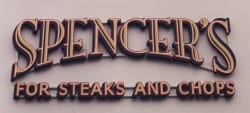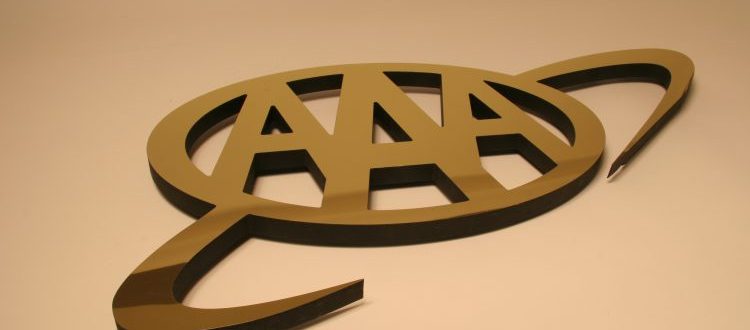Many companies today are opting for laminated lettering for logos and interior sign displays because laminate letters simply look great without costing an arm and a leg, which in the current economy, you simply won’t have because the IRS already took it!
Creating Laminated Logos with CNC Routers – How This Technology Changed the Sign Business
Laminated logos have been around for over 20 years and really became both popular and affordable with the advent of the CNC router. In case you didn’t know, CNC stands for “Computerized Numeral Controlled”- or basically a router table with a carriage whose X and Y axis are controlled by a computer. CNC routers are controlled by vector based software programs that cut outlines. Typically, letters for logos start out as a 4′ x 8′ sheet of paper or plastic laminated foam board, and depending on the desired material are laminated with metal or other types of plastic, or simply painted after routing.
They are often used for window displays or affixed to walls using several different methods, the easiest of which, in my opinion, is double-faced tape. We use 3M’s VHB most of the time as it sticks to the letters and the walls and won’t allow lettering to ever drop under normal circumstances. And it can be removed without damage to the walls a year or two down the road, unlike some cheaper tapes. Because of their three dimensional – 3D – appearance, add class and visual interest to any display or wall sign.
Materials Used in 2011
Types of materials used for the underlying materials of laminated letters include EPVC, or expanded polyvinyl choride, which goes by brand names such as Trovicel™, Sintra™, and Komatex™. This material comes in thicknesses up to 1″, although the most commonly used is 1/4″ thick EPVC. It is often painted to match a specific color, or laminated with polished anodized aluminum for a classic appearance.

Another type of material is high density urethane, a closed-celled rigid foam material which can withstand the elements for decades. This material can be routed into outdoors and painted, or it can also be laminated with aluminum or plastic or copper to create both durable and attractive lettering for walls. It comes in thicknesses up to 4″, so HDU can created some quite large 3D signs with some real depth.
Gatorfoam™ is another close-celled but dense foam, made of polystyrene and over-laminated with a fabricated wood veneer that’s as smooth as paper. In fact, we used it for flat panel interior signs as well due to its smooth surface. Because it mills well with a CNC router, and metals and sheet plastics adhere nicely to its smooth surface, it is one of my personal favorites for interior signage, and is tough enough, with a good coat of urethane paint, to be used for outdoor displays and even for business signage.
Indoors, Gatorfoam™ lettering products can be used in or on displays, as interior graphics for walls, or behind interior reception desks in professional offices such as real estate or law offices or banks or medical offices or almost any other facility that requires classy graphic visuals, especially shiny metallic objects.
Laminates include almost any kind of metal, although the favorite, for cost reasons and versatility reasons, is aluminum. Aluminum can be anodized to a shiny silver or gold color, as well as to darker bronze and even black. Cost-wise, it’s going to be cheaper than laminates of brass, copper, or stainless steel, although there are many companies and stores that will opt for the more expensive material as it reflects their desire to let their clients know that they won’t cut corners on how they look or how far they’ll go to please their customers.
Many companies have no clue that their signage could be telling their clients that they’re cheap, whether it’s true or not. If a client sees a painted sign, subconsciously they may think, “this company cuts corners on cost for the way their signs look, I wonder if they’d cut corners on the quality of the widget they manufacture or the service they provide? Whereas laminate letters that are coated with copper, or stainless steel for logos might have the reverse effect, influencing clients positively and subconsciously to view your firm as one that doesn’t cut corners on service or quality.
Click here if you are interested in customized over-laminated graphic displays discussed.
Which laminated lettering material have you tried and would love to recommend? Comment on the form below.
Popular Posts:




